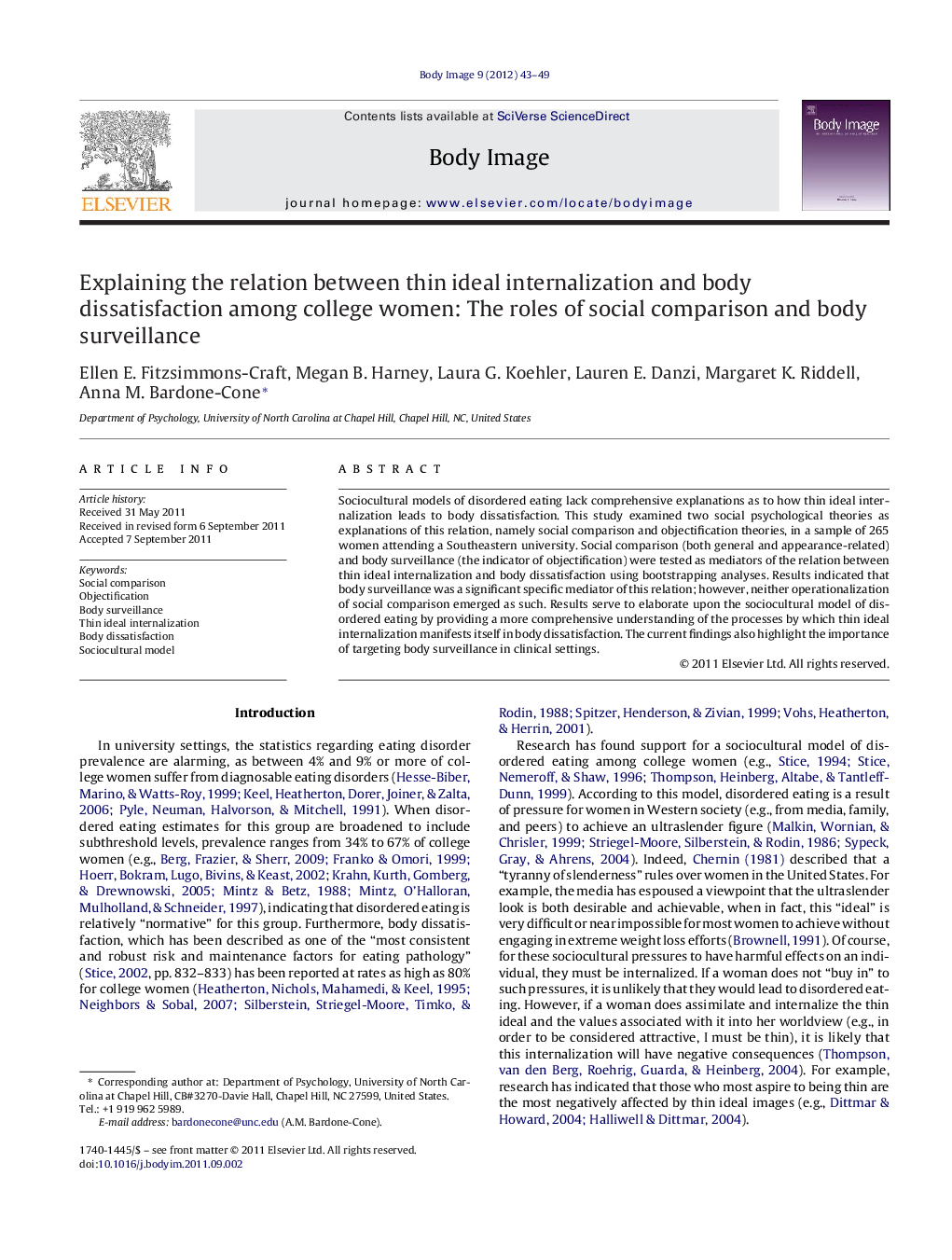| Article ID | Journal | Published Year | Pages | File Type |
|---|---|---|---|---|
| 903197 | Body Image | 2012 | 7 Pages |
Sociocultural models of disordered eating lack comprehensive explanations as to how thin ideal internalization leads to body dissatisfaction. This study examined two social psychological theories as explanations of this relation, namely social comparison and objectification theories, in a sample of 265 women attending a Southeastern university. Social comparison (both general and appearance-related) and body surveillance (the indicator of objectification) were tested as mediators of the relation between thin ideal internalization and body dissatisfaction using bootstrapping analyses. Results indicated that body surveillance was a significant specific mediator of this relation; however, neither operationalization of social comparison emerged as such. Results serve to elaborate upon the sociocultural model of disordered eating by providing a more comprehensive understanding of the processes by which thin ideal internalization manifests itself in body dissatisfaction. The current findings also highlight the importance of targeting body surveillance in clinical settings.
► Body surveillance was a significant specific mediator of the relation between thin ideal internalization and body dissatisfaction. ► Neither general nor appearance-related social comparison was a significant specific mediator of the thin ideal internalization–body dissatisfaction relation. ► Results serve to elaborate upon the sociocultural model of disordered eating.
